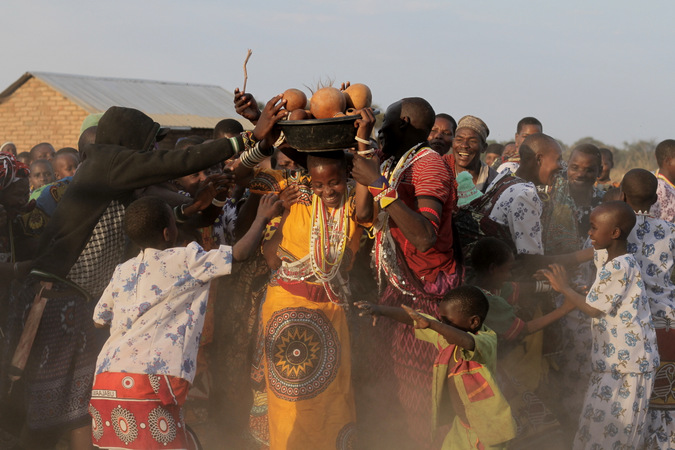
North of Chimala, in the Usangu wetlands, at the border to Ruaha National Park in Tanzania, is the land of the Sukuma people. The dwellings of different families are spaced far apart, often fenced in with thorny acacia twigs. As pastoralists their whole pride are their herds of cattle and goats – and their wives, as wealthier men can afford more.
Recently we had been invited to the marriage of a Sukuma friend who got married to his third wife. It turned out that my role was mainly to act as the wedding photographer.
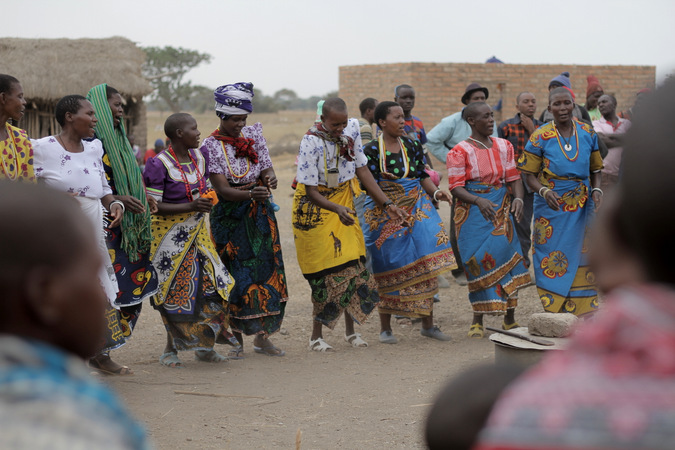
The ceremony lasted for two days, and we had been invited for the afternoon of the second day. When we approached in our Land Rover, we were confused as the farm of our friend seemed deserted. It turned out that everybody was hiding inside the huts or in the stripes of shadows along the walls of the huts to escape the burning sun and hide from the wind and the dust.
Now in August, after many months of dry season without a single drop of rain, the land has turned into a desert of fine, penetrating dust. Unfortunately, most of the acacia trees had been cut for firewood.
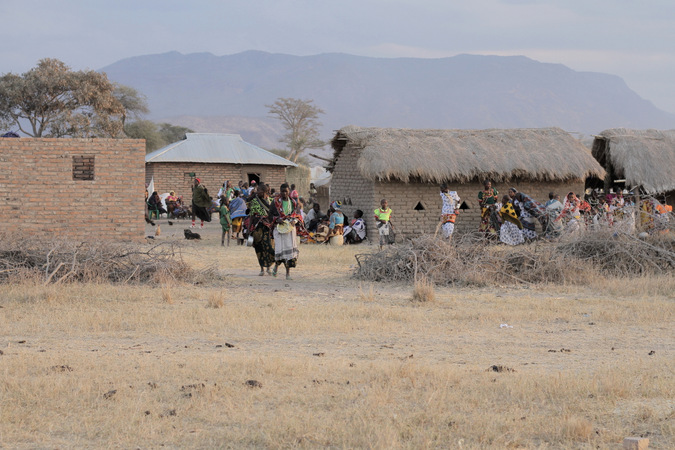
After a friendly welcome by the family, we were shown into a little hut for shelter to wait for the start of the festivities. The bride and bridegroom were still getting dressed.
I had a little bit of time to study our surroundings. The hut was a simple square construction made of bricks, but the roof of our hut was made from reeds expertly weaved together with strips of animal skin. Outside in the scorching sun in the central area of the farm, food was simmering in large, covered aluminium pots on fire places arranged with bricks.
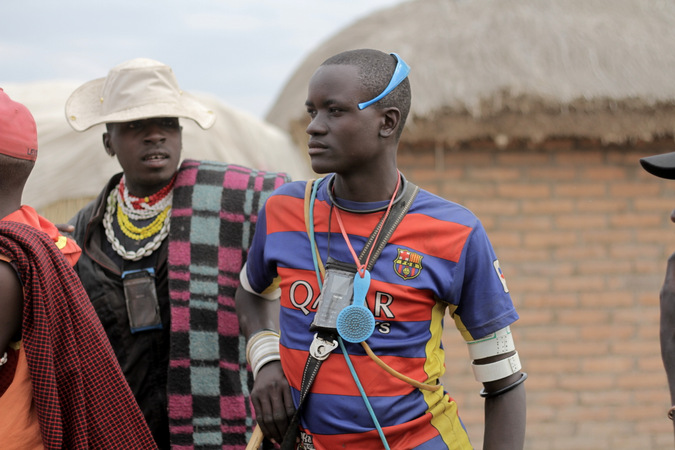
I got out my camera to take a few shots and that attracted the attention of some young men who wanted to pose for their picture. It turned out that everybody wanted a picture!
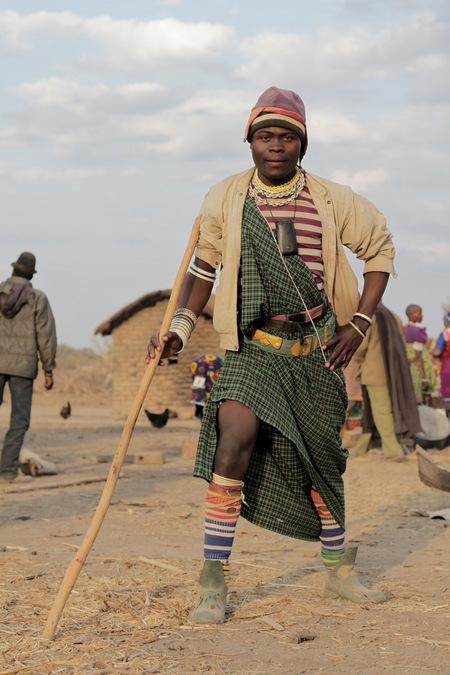
The steady beating of a drum announced the start of the festivities. The guests had gathered in a half circle opposite the main hut from which the bride and bridegroom and close family members were emerging. The bridal couple was adorned with several strings of colourful plastic beads around their necks, wrists and ankles.

The colourful dresses of the men and women were in stark contrast to the monotonous surroundings of grey dust. The rhythm of the following series of games and challenges that the couple had to master was set by the beat of the drum and the hypnotic song of the wedding guests.
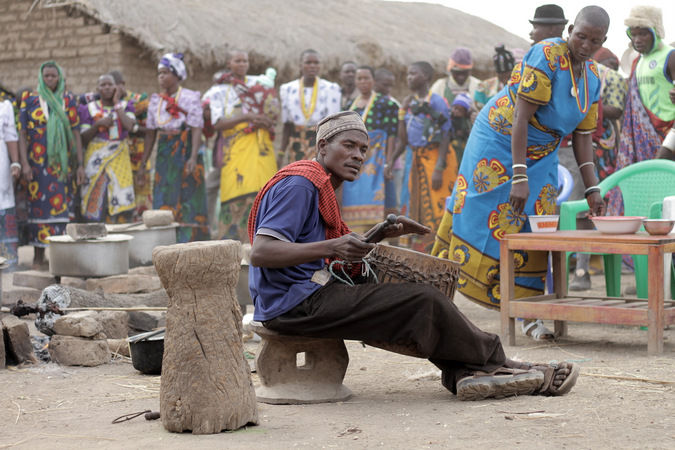
They were dancing and running and singing, their stomping feet raising dust that was taken up by gusts of wind and whirled away. The bride pair and family were then seated around a table and speeches and more song in their Sukuma language followed, which included receiving money presents in two pots – one for the bride and one for the bridegroom. The whole procedure was accompanied by lots of laughter!
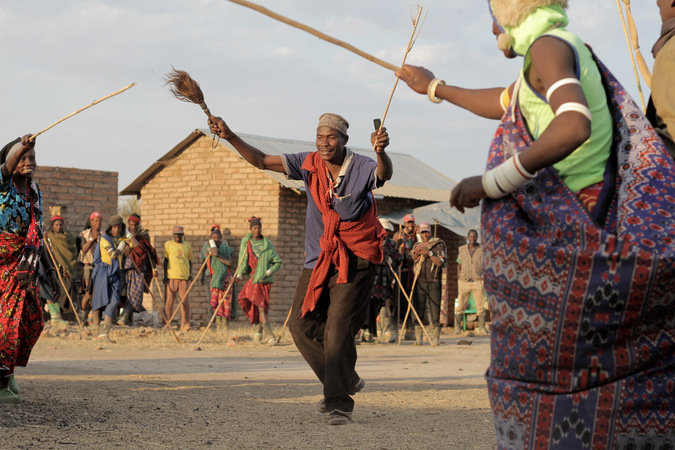
After the first part of the ceremony the food was served. We were brought back to our hut where a table had been set with plates of rice and bowls of meat. Water was brought to wash our hands and everybody was eating with their hands while at the same time chasing away the hordes of flies that seemed equally hungry as us.
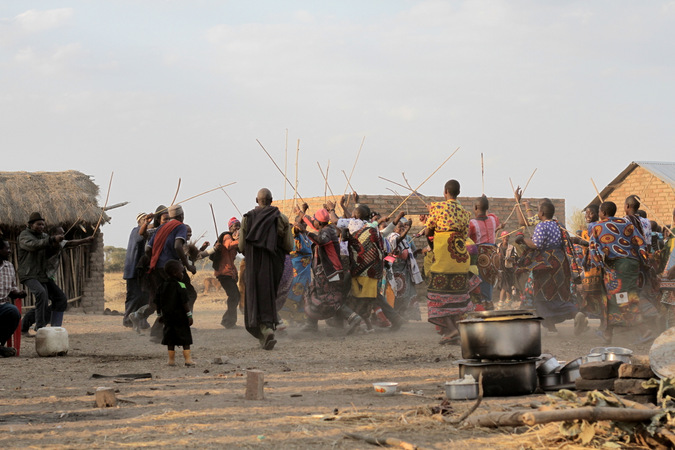
After the meal, the drummer gathered the family and guests back into a circle. This time everybody had brought a stick and accompanied by the beating of the drum and song, they ran to the middle of the circle and brandished their sticks as if fighting. The air was thick with dust! I had not been prepared for this and hurriedly fled from the scene to avoid getting in the way.
The last game involved less dust as the couple had to balance a bowl of pumpkins on their head, while everybody else was trying to steal a pumpkin from the bowl.

Finally my great moment as official wedding photographer arrived and everybody gathered for pictures. Exhausted and covered with dust, but exhilarated and happy, we left the wedding in the already setting sun.
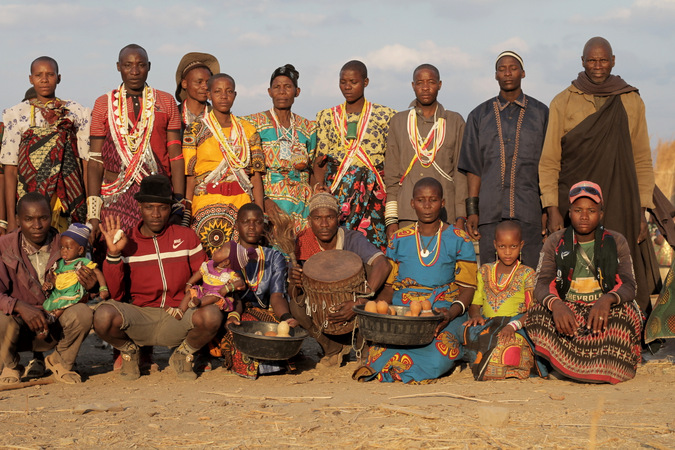
To comment on this story: Login (or sign up) to our app here - it's a troll-free safe place 🙂.![]()






